Massive Growth and Development Experienced with our Sorghum bicolor (Guinea corn ) after the floods
Hello Hive and my homestead family!
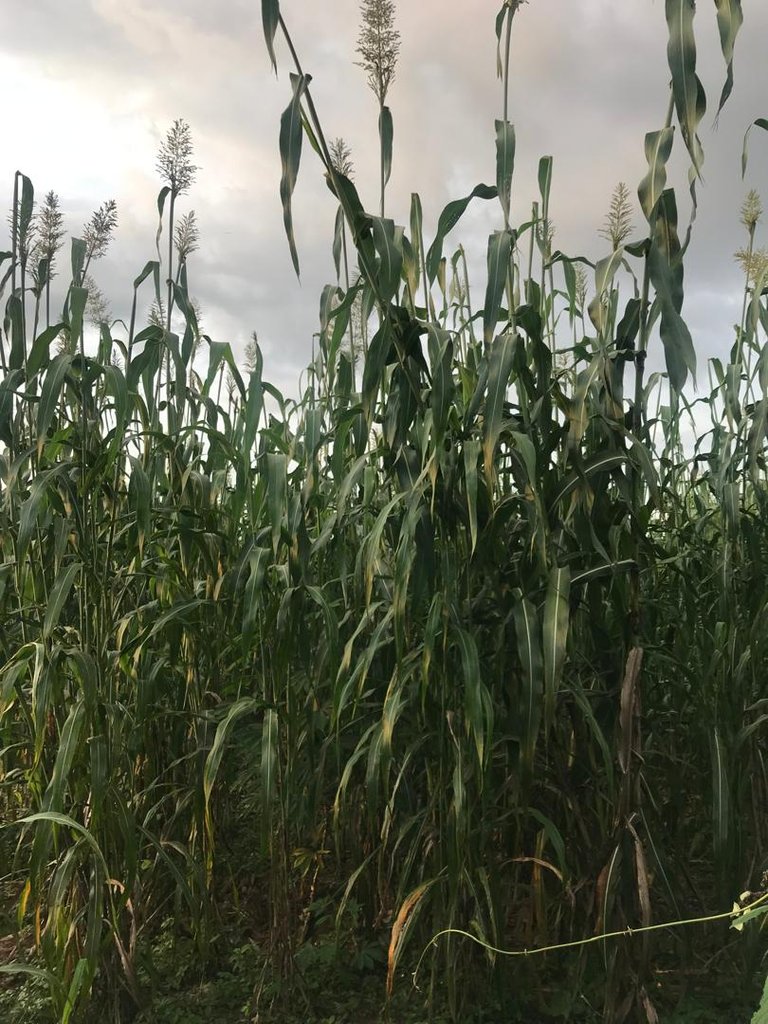
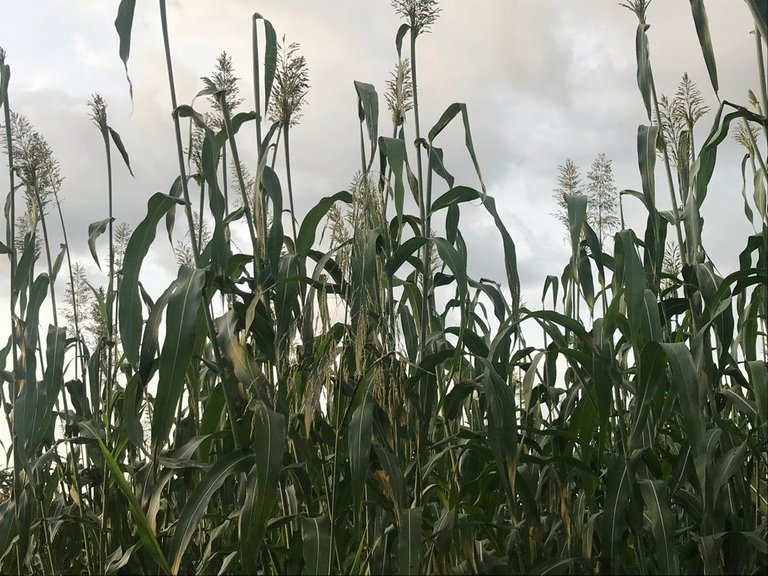
The flood water that came and even though it swallowed and overshadowed our farms didn't last up to a week in the farm; the waters were quickly drained and dried out; no rot, dying, or decay of any of the plants was experienced.
Can you see from here how that the flood water coming from the river is now fully drained and away from the farm. Although the river is still full and scary for one to go closer to it.
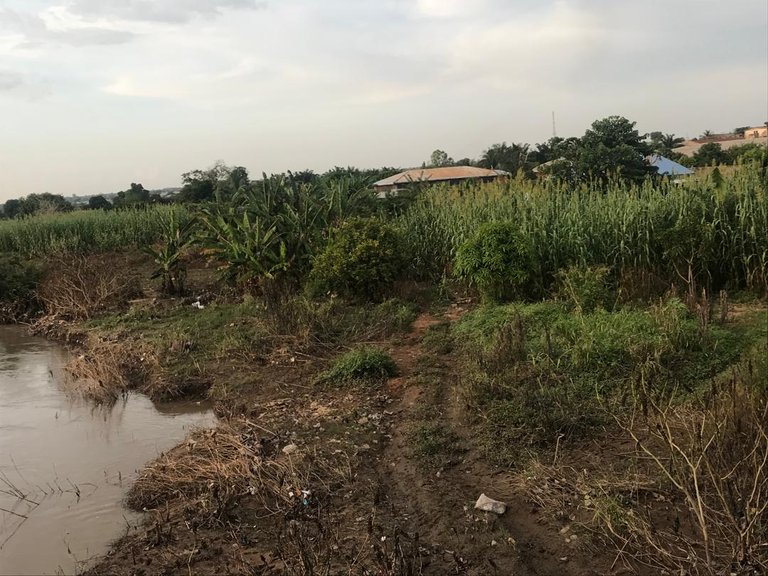
The recent development now is the seed production stage. Unlike corn that produces the male tassels at the pollination and fertilization stages, this one does a different thing. It produces the panicles with flowers in which the seeds will be borne within in the coming days.
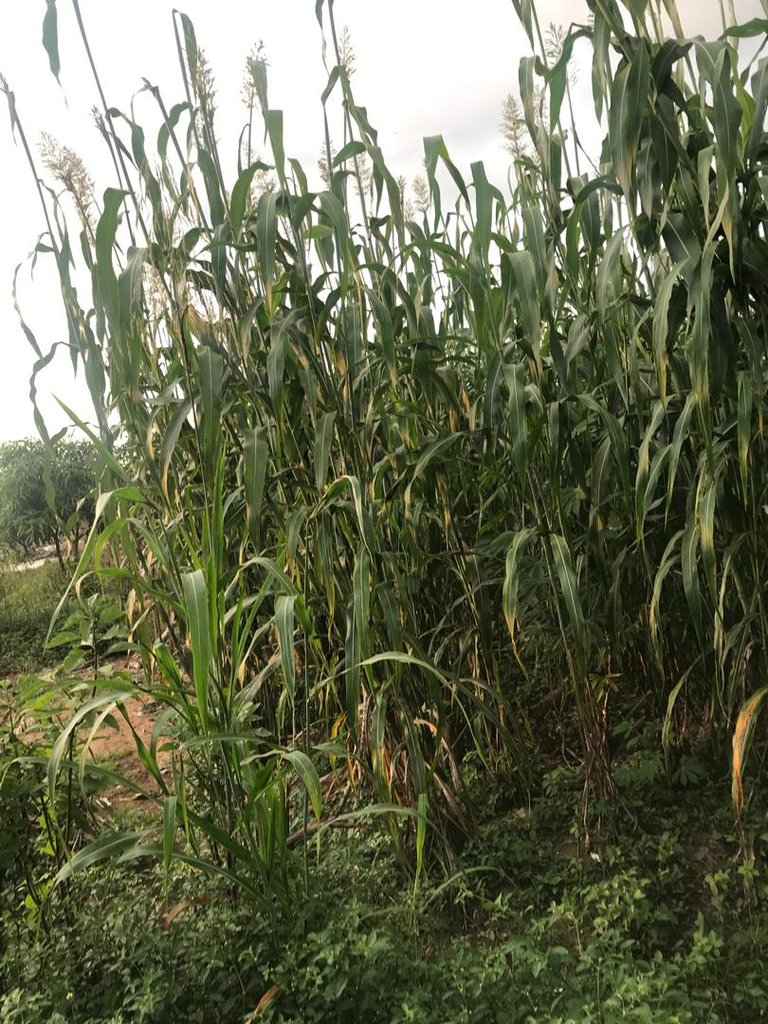
I was more than happy to see that the guinea corn is at the fertilization stage; all are now bearing the panicles, and in a few more weeks we will have our guinea corn seeds beginning to mature up within the panicles. This is extremely taller than me and about 180" plus height above the ground level that I can barely bring the head down for us to see
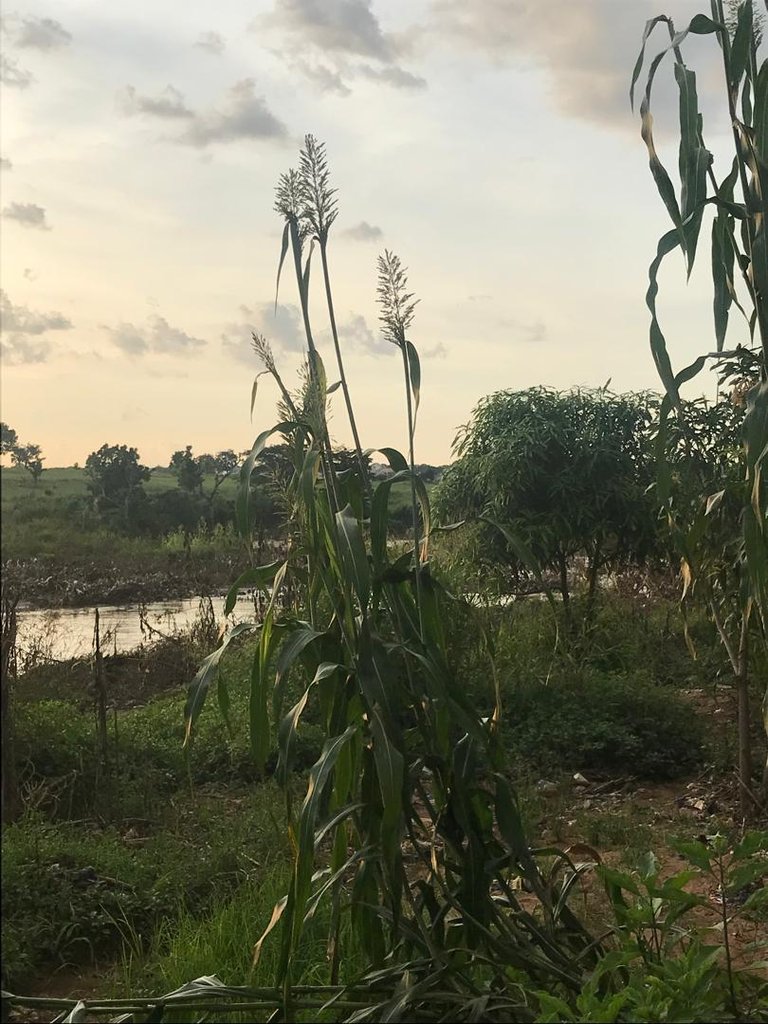
All of these crops are very important to us. The nutritional benefits of corn are different from those of sorghum, as sorghum contains some more iron and magnesium than corn, which contains more carbohydrates and a few vitamins. Aside from these differences, we also enjoy different local dishes prepared with guinea corn, of which maize cannot be used as a substitute for preparing such. I believe that you can imagine my excitement regarding these guinea corn.
My family may not have been fortunate to plant some guinea corn this year but we have a family friend here whom we often work together and share a lot of things in common, while we assist each other with our farm work he has promised to share some of his guinea corn with us. And that if we wanted more we can swap it with any of our other crops.
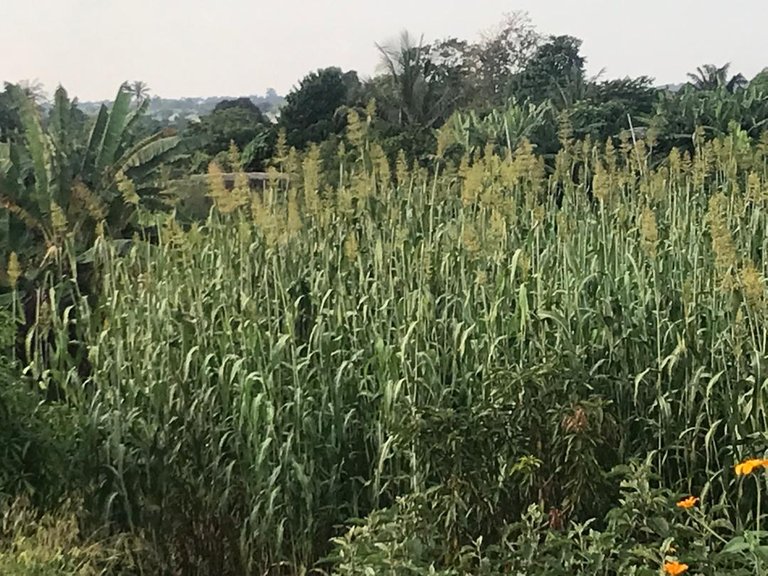
He has planted a very large portion of land with lots of these than he will ever need and at harvest he can also decide to sell some to us at a cheaper price. This is one of the ways people around this community often assist each other and share their food with others who are worthy and deserving. Not all people are willing to farm and some others prefer to stay idle, such are the people we often don't associate with, but for everyone who is hardworking, we do share our resources among each other and assist each other with our various farm works. Knowing fully well that a portion of this farm will be giving to us at harvest we gladly work and assist our friend here with everything that is needed.
Sending Love and Ecency Curation Vote!
 Follow Eceny's curation trail to earn better APR on your own HP. : )
Follow Eceny's curation trail to earn better APR on your own HP. : )
I am glad the flooding did not hurt the sorghum crop (I never heard it called Guinea corn - interesting). It is something I want to try growing when I expand my garden area. Sometimes flooding is beneficial because it brings more nutrients. When I was a young man riding with my older cousin to his house we would pass a farmer’s field next to a creek that would flood in the Spring. He always said that he thought sweet corn would be a good thing to grow there. The farmer himself just used it for cow pasture after the waters receded.
Good luck with your crop and the harvesting!